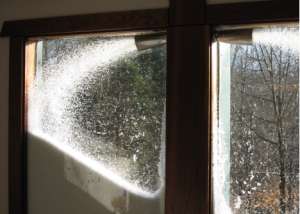At almost a millenium old, the Anasazi Cliff Palace in Mesa Verde National Park in Colorado remains an inspired use of both natural and man-made solar shading for cooling and solar gain for heating. (Photo courtesy WikiCommons)
From the Ancestral Puebloans, fast forward to the 1970s and the years around the Energy Crisis. When I got into the energy efficiency business back in 1977, everything was new . . . to me at least. Certain luminaries became my heroes. The fundamentals of the second law of thermodynamics were true then and are true now, but technology has changed rapidly since I used the heat from the transmitters in a local radio station to heat the basement offices or when I glazed the cinder block south wall of a newspaper to act as a massive, passive solar collector.
Don’t Reinvent The Wheel
In the 1970s, when the oil embargo hit and we waited in line to buy gasoline, fear of being cut off from fuel for heating our homes prompted a massive amount of innovation. At the time, we called the homes Passive Solar Homes, but “solar” was dropped when the house-as-a-system concept took hold. Thanks to the energy advances in those years–and before–there’s no need to reinvent the wheel. The technology is out there and available, and you should pay attention to it–unless you want to make the same mistakes again.
Read All About It
As far back as 1891, a great book on the art of ventilating buildings was written, and you can read it on-line. Since the book came out prior to the use of electricity in homes, William Buchan’s solutions are all passive.
More recently, there’s the work of Dr. Bill Shurcliff, born in 1909. He died in 2006 with 19 patents to his name. In the last part of his life he turned his attention to solar energy and energy efficiency and would attend monthly luncheons at MIT. A prolific writer, Shurcliff produced a number of amazing books; many are available on Amazon. They include Solar Heated Buildings of North America – 120 Outstanding Examples (1978); New Inventions in Low-Cost Solar Heating – 100 Daring Schemes Tried and Untried (1979); Air to Air Heat Exchangers for Houses (personally published in 1981); Thermal Shutters and Shades (1981); and Super Insulated Houses and Double Envelope Houses (1981).
Ned Nisson, another expert, wrote The Super Insulated Home Book. (Ned was the editor of Energy Design Update). There are a bunch of other books on super-insulated houses that should be reviewed. (Certainly insulation technology has changed since 1985. We thought that urea-formaldehyde was the greatest thing going.)
What’s New Under the Sun
The Solar Home Book by Bruce Anderson, the editor at Solar Age magazine, has been my Bible. My copy is barely holding together, and I still use it. The Passive Solar Energy Book by Ed Mazria (who was rumored to have played for the Knicks) concentrates on the solar aspects of the design of homes. Check out Ed’s 2030 Challenge. The Solar Energy Handbook written by Henry Clyde Landa, Mariann Cox Landa, Juliet Marie Landa, and Douglas Cox Landa contains information that I can’t find anywhere else (I have a hand-typed copy of the book).
Innovations That Matter
Steve Baer of Zomeworks invented some amazing things, including a Beadwall window product made of two panes of glass with three-inch airspace between them (photo courtesy Commonwealth Solar).
A vacuum pump fills the cavity with polystyrene beads in the evening, and then vacuums them out by morning. I still have a Beadwall tank in my garage that I never had the courage to install. Somehow I just couldn’t take the step of removing a window, installing movable glass, running hoses down to the basement, and blowing and sucking the polystyrene beads through the system.
There were Waterwalls and Earth Tubes and inflating window shades and Thermol 81 and Ecosea houses and Amory Lovins’ solar briefcase. Some of these technologies didn’t survive–they just weren’t good–but many smart technologies got lost in the shuffle because the companies were under-funded or run by enthusiasts, not business people. Wouldn’t it be great if we could develop a building science resource library so that the technologies could be tapped into and the many mistakes that were made would not be repeated? There has always been a struggle between the passion for improving the environment and developing, producing, and selling products.
Passivhaus seems to have been able to transcend that struggle. Perhaps it’s because it comes from overseas. Maybe it’s due to stringent certification requirements. Or it could be because there’s equipment now that can measure and verify performance. Whatever the reason, not every builder is going to want to go as far as those super-strict house rules. Still, you don’t have to go full-tilt: Cues can be taken from the principles. People, projects, products, and movements like these push the energy efficiency technology forward, and that’s a good thing.
Paul Raymer, a building science teacher, is chief investigator of Heyoka Solutions LLC. His blog, Home Energy Prose, will appear on occasional Fridays.




